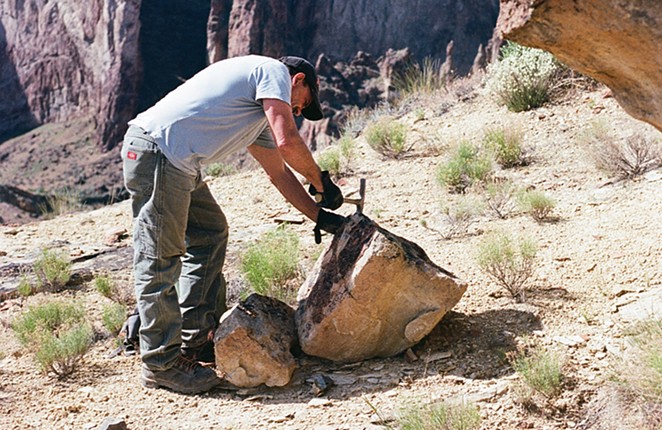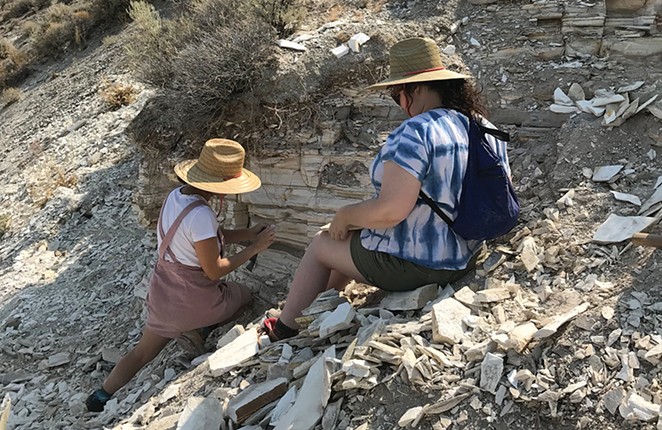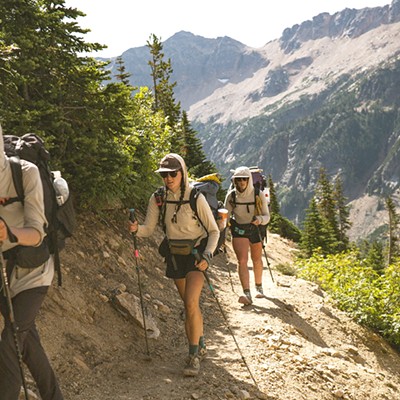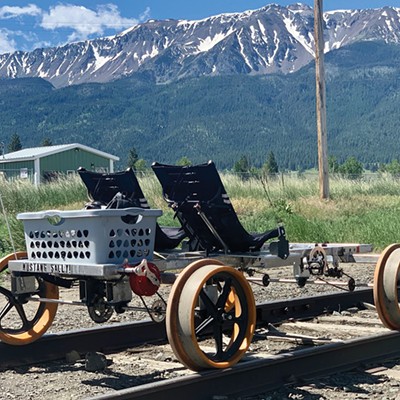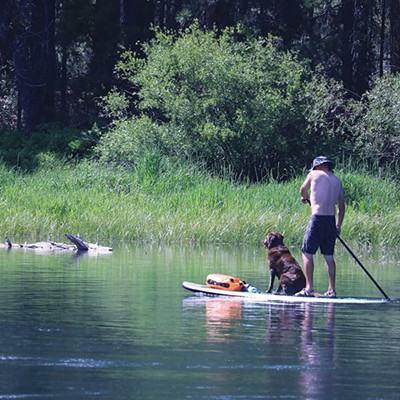In the bountiful ocean of sagebrush that blankets Oregon's high desert, rock and mineral treasures await us. But how can we make ourselves worthy of them? And are they really ours for the taking?
Rockhounding, the hobby of searching for rocks, is a deeply rooted Oregonian pastime. For decades, boisterous families and feverish old-timers have taken to the proverbial hills in search of agate, jasper, opal, petrified wood, sunstones and obsidian. Humans have covered almost every inch of desert, mapping pockets of minerals, occurrences of fossils and outcroppings of rock. Rockhounds have written guidebooks, formed clubs, opened mines and plowed new roads just to get to a rock. For many, a simple hobby becomes a lifelong pursuit.
Oregonians are gifted with an incredible abundance of public land, and rockhounding is permitted on almost all of it. But just because such resources exist, does it mean we should giddy-up out to the desert and lasso ourselves buckets upon buckets of rocks? What will be the fate of such lovely material? Will it languish in a forgotten box in the garage? Grow moss in a pile in the backyard? A single tear runs down my face as I think of such things—a "cowboy cry" as my friend Walker calls it. Rather than round up all the treasures that are out there, what if we take a different tack?
Plainly put: rockhounding is rock-taking. In the human history of our region, the public lands we get to enjoy today were forcibly taken from the original peoples who cared for them. By collecting rocks, we are perpetuating the act of taking from the land. So, when you head out to the desert in search of rocks, ask yourself: what will I do with this rock? Will I display or gift it in a meaningful way? Will I make something special with it? If the answer is yes, keep it. If the answer is no, leave it. If the answer is maybe, definitely leave it. It's the maybes that tip the scale toward heavy-handed collecting.
Besides, these rocks are vessels of extraordinary stories! When we remove them from the landscape, we are ending their infinite nights spent under the stars. No longer will they see the passing of a hundred seasons, or continue onward in their epic geological journey. When we take them, we remove them from the context of their extraordinary volcanic origins. Glassy obsidian, like that found on Glass Buttes, erupted on the margins of extremely viscous lava, and pumice exploded around it. Over time, whole forests have been flattened and buried in volcanic explosions; the minerals in the ash invading their trunks, petrifying them like Medusa. Today, fossil wood scatters in high desert locales like Hampton Butte, Congleton Hollow and the Owyhee gulches. Agates that formed in voids in lavas became the famed thundereggs of the Ochocos. And some ancient lava flows yield unusually large crystals, like the famed sunstones of the Rabbit Basin.
Oregon's volcanic rodeo has left us with a desert landscape blanketed in treasures. Even though I have tried to convince you that they deserve to stay (mostly) in place, I very much believe that everyone should try their hand at rockhounding. It's a sweet, leisurely way to be in the landscape, traversing slopes and ravines that you wouldn't otherwise think to visit. It can lead you to amazing discoveries that established trails never could. One time, after searching a remote gulch in the Owyhee Canyonlands, some friends and I found entire cliffs of crystalline calcite, translucent and honey yellow. Some of the crystals were the size of turkeys. Yee haw! Without rockhounding, we would have never found such an extraordinary formation. Am I going to tell you where this place is?
Actually, yes. It will be published in my forthcoming rockhounding guide for Oregon and Washington that will hit shelves in May of 2025. However, if you just can't wait, may I suggest picking up a copy of my introductory book, "Beautiful Rocks & How to Find Them." This book covers all the ins and outs of rockhounding: where to find material, what the rules are, how to consider ethics and things you can do with rocks once you collect them. It's the perfect guide for any young mutton buster looking to try their hand in the wild world of rockhounding.
—Alison Jean Cole is a volunteer with Oregon Natural Desert Association, a nonprofit organization that protects and restores Oregon's high desert public lands and waters. She is a lapidary artist, author and outfitter guide based in Portland, Oregon. Her new book, "Beautiful Rocks and How to Find Them," published by Princeton Architectural Press, is available at a bookstore near you. Keep an eye out in 2025 for her new rockhounding guide to Oregon and Washington, to be published by Mountaineers Books.

